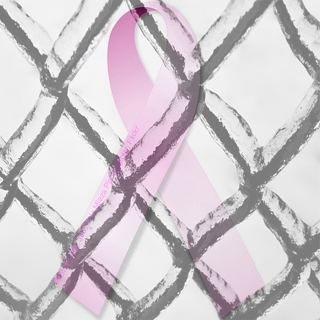Unfortunately, cancer is a disease that we are all connected to in some way. Many of us have faced cancer within our families, or personally. And even if you are a rare person who hasn’t in some way been touched by cancer, we all come in contact with cancer-causing chemicals every day. While depressing, this also indicates an area and opportunity for cancer prevention.
In my family for example we’ve had far too many cases of childhood cancer and my aunt recently kicked cancer in the arse. According to the National Cancer Institute, almost 45% of men and 38% of women in the United States will be diagnosed with cancer at some point in their lives.
Did you know that cancer has a distinct link to toxic chemicals?
(Photo Credit: Mustang Joe via photopin and cc Jose Luis Mieza Photography via photopin cc)
We are exposed to a complex mixture of industrial chemicals everyday, some of which increase the risk of certain diseases and conditions, including cancer. And this is why we are advocating for reform of our toxic chemical laws.
Until we are able to reform our laws, policies, and consumer markets, we need to be aware of the chemicals that are linked to cancer.
Examples of carcinogens:
Trichloroethylene (TCE)
TCE is a highly carcinogenic compound, and it isn’t hard for us to come in contact with it. TCE is widespread in ambient air, indoor air, soil, and groundwater.
Trichloroethylene is present in some paint removers, adhesives, rug cleaners, metal cleaners, pepper sprays, and spot removers. TCE has been detected in air, surface water, and groundwater and is one of the most common contaminants found at toxic waste sites.
Dichlorodiphenyltrichloroethane (DDT)
Well, this pesticide is a mouthful. DDT has been linked to breast cancer. Women who were exposed to higher levels of DDT before age 14 had a markedly increased risk of breast cancer later in life, compared to women whose DDT levels were lower. Although DDT was phased out in 1972, its “toxic residue” remains in the food we eat.
This “well-know” chemical has been linked to cancer for a while now, but despite its status it is still ending up in everyday consumer products. In a 2009 California study, nearly all new single-family homes had indoor formaldehyde concentrations that exceeded guidelines for cancer and chronic lung irritation.
Formaldehyde is also found in furniture, building supplies, cosmetics and personal care products, wrinkle-free shirts and bedding and glue.
Here is a list of chemicals found in consumer products with links to cancer:
|
Table 1: Commonly Found Chemicals Known or Reasonably Anticipated to Be Human Carcinogens. |
||
| Arsenic
Asbestos Benzene Benzidine Butadiene Cadmium Carbon Tetrachloride |
Chromium (hexavalent)
Coal Tars1,4 Dioxane Ethylene oxide Formaldehyde Lead Methylene Chloride |
Nickel
Silica Styrene Sulfuric Acid Toluene Diisocyanate Trichlorethylene (TCE) Vinyl Chloride |
Our Health Report examines the best peer reviewed science on toxic chemicals and their links to adverse health outcomes. Cancer is one of the areas where we know about human exposure by looking at worker exposures.
Our coalition represents and works with workers facing on the job exposure to cancer-causing chemicals, communities that face higher exposure to carcinogens from contaminated air, water and soil, and cancer-clusters of populations with elevated cases of cancer.
An excerpt from our Health Report lays out the statistics about cancer rates:
Over the past two decades, the rates of some cancers have risen significantly. These include:
- Kidney, liver, thyroid, esophageal, and testicular cancer, as well as melanoma in men;
- Non-Hodgkin’s lymphoma, Hodgkin’s disease, melanoma, and cancers of the thyroid, liver, and kidney in women; and
- Childhood cancers overall, especially childhood leukemia and brain cancer.
Our partners at Stupid Cancer, are an incredible organization for young adults facing cancer, put it simply and well: cancer is stupid.
And so are cancer-causing chemicals.
We need strong laws on toxic chemicals to prevent the exposure to cancer-causing chemicals.
We need retailers to step up and phase out these chemicals from their supply chain.
And finally, we as consumers need to make informed choices (to the best of our ability) to avoid cancer causing chemicals.
Together we can kick cancer-causing chemicals to the curb. (Say that three times fast!) We won’t be able to prevent every case of cancer through these steps, but if we can prevent some, it’s worth it.




